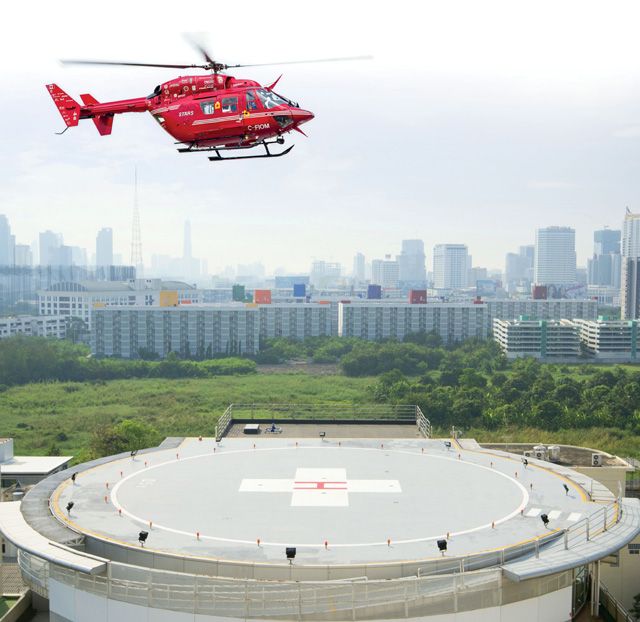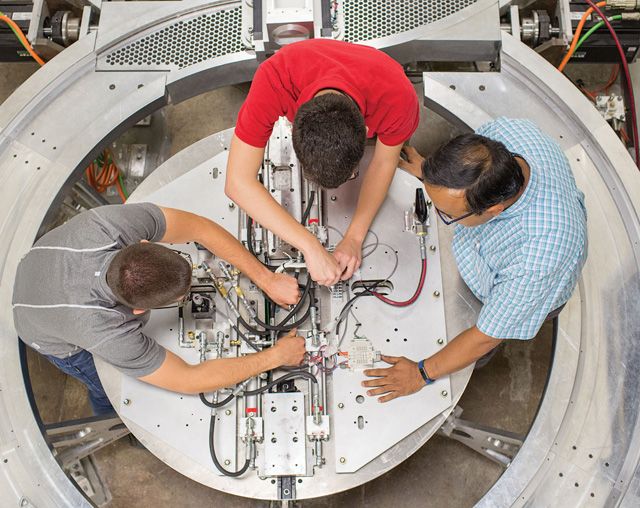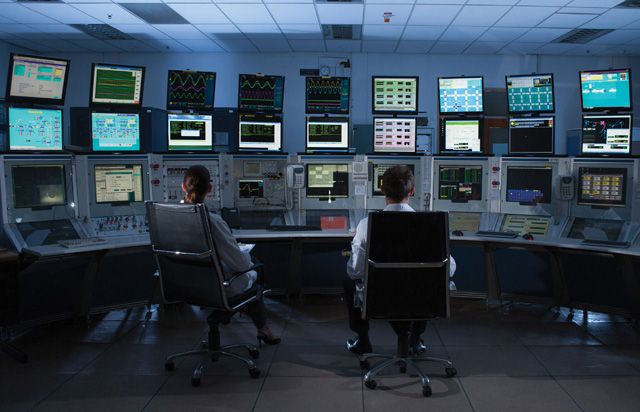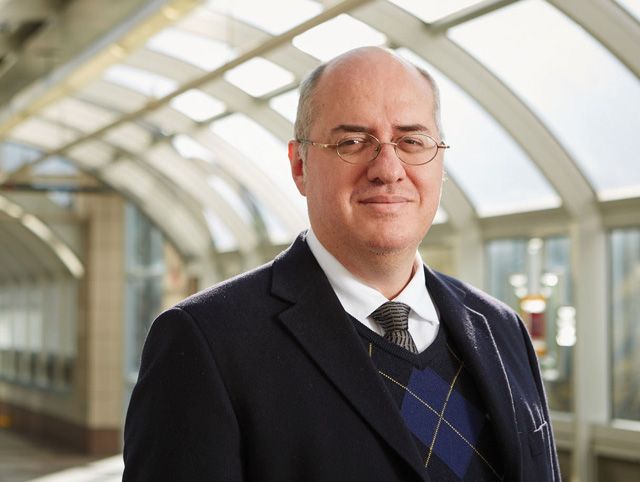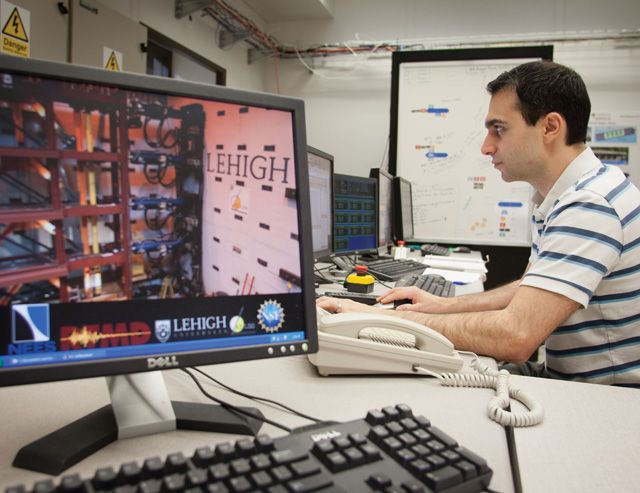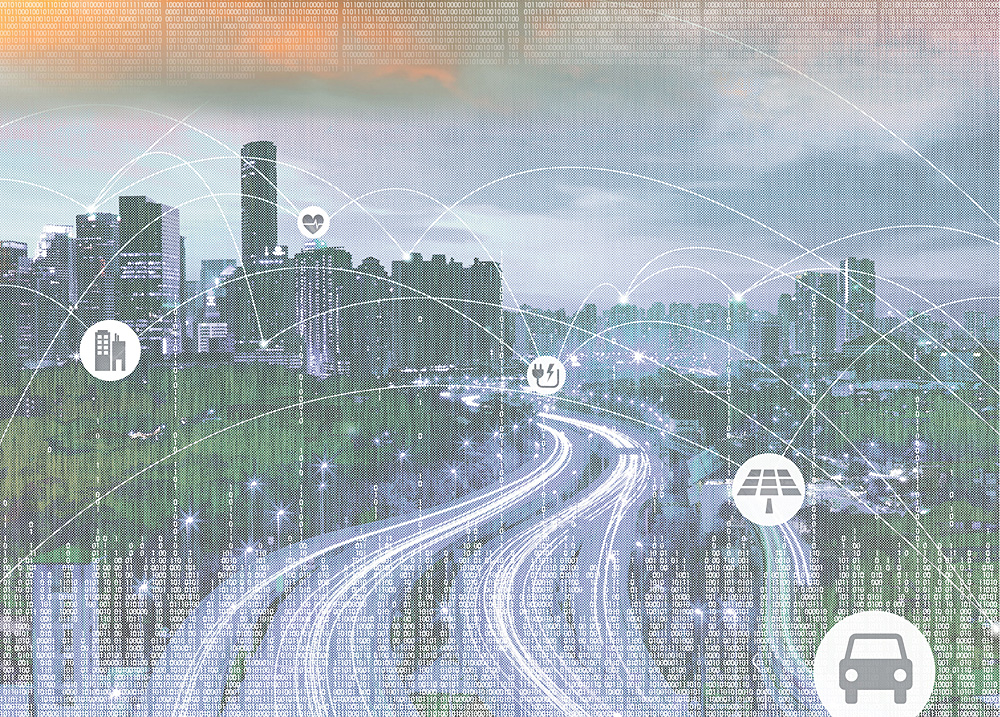
The mention of smart cities may bring to mind visions of a sparkling future metropolis, churning smoothly and silently: gleaming monorails gliding by with nary a whisper, walkways whisking pedestrians to their destinations, wireless and instant access to information on demand, and lights brightening and dimming on cue as you enter or leave a room.
The reality of the smart city will be considerably grittier and far more complex, but a reality it will be—of necessity.
A 2014 United Nations report projected that the global urban population would rise from 54 percent in 2014 to 66 percent in 2050. Much of that growth will take place in disadvantaged areas ill-equipped to accommodate the greater numbers and density of people. As urban populations rise, efficiencies will have to be identified in expanding the finite elements of urban infrastructure. There will be commensurately greater wear and tear on energy, communication and transportation systems. The vital mechanisms that make cities habitable are going to come under increasingly severe duress.
Environmental concerns, like pollution and disease, as well as the planetary climate peril that looms, are further drivers in the urgent quest to create better and more connected 21st-century cities. Cybersecurity will be of paramount importance, as more and more of the systems that run cities come online.
The technological advances now being developed to make communities more connected will demand, in tandem, a rethinking of how people interact with and in cities, and how to best use the new technologies to improve human life. In creating the smart cities of the future, researchers will have to fundamentally address, and will in turn change, what Shalinee Kishore calls “the anthropology of the city.”
Kishore, a professor in the department of electrical and computer engineering, is referring to the myriad ways people relate to the elements of a city, and the symbiotic process by which those elements shape the daily lives of its citizens.
“We view smart cities as adaptive systems, where interaction between the city’s infrastructure and humans is modeled as a continuous feedback loop and enabled by a supporting cyber-system,” explains Hector Muñoz-Avila, professor of computer science and engineering. “The infrastructures are themselves connected sharing information, which derives from infrastructure interdependencies, enabling cities to adapt to changes to over time. This includes long-term changes such as population growth and short-term immediate responses such as severe weather events."
Connected communities will herald new opportunities to increase public safety, clean the environment, enable urban farming and on-demand manufacturing, and create as yet unseen avenues to entrepreneurship that will further accelerate the cycle of change. During the minutes spent on the bus commuting to work, in interactions with civil government, inside within the four walls of their homes, city dwellers will see the shape of their lives shift. And as they interact with the city’s mechanisms, use its infrastructure, and communicate with each other—via their actions, mobile and personal devices, and computers—citizens will provide information that will alter the systems of the city.
But the task of creating successful smart cities is gargantuan. Researchers will have to find a way to integrate information from power plants, bridges, tunnels, means of transport, home appliances and everything in between. The data from sensors and devices will have to be communicated reliably and securely to data centers, which will analyze the information. Necessary actions or notifications will have to be transmitted to traffic control devices, buses and trains, power grids, homes and health care facilities. To top it all off, none of these systems will work optimally until their elements are connected and interdependent.
Kishore is one of a team of Lehigh researchers seeking solutions in what it calls “Smart Infrastructure for Connected Communities,” or SI2C for short. And although the team’s approach includes focused engineering needs in this space, it also addresses broader systemic and policy issues that can hinder these complex systems from running smoothly. It’s a big picture approach that tackles overarching problems and creates solutions that can be transferred across particular applications.
The scope of SI2C projects demands teamwork and combining the expertise of researchers conversant in different fields. “Due to the complexity of the problems, we need a big tent,” says Shamim Pakzad, associate professor of civil and environmental engineering. “You have to consider all the various levels, down to the granular. There are also components that lie outside the engineering world that cannot be ignored and that add difficulty. There is no best way to do this.”
One of the most important elements to smart city development is energy, in no small part because improved energy efficiency and utilizing renewables generally offer the greatest number of additional benefits, like cost savings and a cleaner environment. At Lehigh, the Integrated Networks for Electricity research cluster is uniquely resourced to address the matrix of problems that surround the creation of these systems. Besides being a dynamo for innovation in energy provision, the team of diversely-talented researchers is attacking policy, industry and other questions integral to supplying power to large, condensed populations.
Another major energy project at Lehigh is designing small, local grids across urban areas. These microgrids must attach to the comprehensive electric transportation system in order to provide citizens with power during the night or cloudy days.
“There is an interaction there, and we have to determine how the grid can best supply power to the microgrid when needed,” Kishore explains. “Conversely, when the microgrid is operating in ‘island’ mode, we want to see if there is sufficient power to use for a public transportation infrastructure as its passes through the area.”
Modeling is a key tool at this stage for examining how a functioning smart city in all its complexity might operate. By overlaying models of the transportation, energy, communication and other systems, researchers can map the interdependencies of the systems and see where weaknesses are most likely to appear, as well as how the systems will change over time. For example, if modeling identifies an area that’s subject to electricity losses, additional resources may need to be deployed to support its power grid; plus, the city would want to avoid scheduling grid-powered buses in that area.
“The goal is to get to the point where we're analyzing real-time data in terms of solar generation, and traffic congestion in a given urban area,” says Kishore. “Right now we’re modeling and designing the best system. Later we want to see how the system would function in real-time.”
Richard Sause, the Joseph T. Stuart Professor of Structural Engineering and director of Lehigh’s world-renowned Advanced Technology for Large Structural Systems (ATLSS) Center, also works on SI2C issues from the conceptual level to the tangible.
“These are cyber-physical systems, physical structures with integrated software and data components―the system is not just sitting there by itself,” he says. “The cyber aspects of the system are used to optimize how the system works. A smart house won’t operate unless you are processing data about the house. It’s how we elevate people’s experience in the house.”
Pakzad offers the example of a bridge: “You have a $20,000 car, which has hundreds of sensors on it. You know everything about the car. You drive it over a billion-dollar bridge that has no sensors and tells you nothing. That is unacceptable. We want to bring all of these sensing systems and information-gathering mechanisms to the cities, collect the data, extract information, and make that work for the improvement of the services and interaction of the citizens with the cities.”
Harnessing data to improve lives
Dig a little deeper into the smart bridge idea and the complexity and difficulties of the bridge system become obvious. Thousands of sensors on the bridge would replace human inspection. Multiply that number by the quantity of bridges, tunnels and similar infrastructure items in need of monitoring for maintenance in a city, and you have a data problem that presents a challenge for humans to evaluating in real time.
Muñoz-Avila designs intelligent systems which will be vital to making large-scale information networks function, and avoid small pitfalls that can cascade a big nuisance. “What if you have an alarm on your bridge sensors that will just alert a human when a it detects something suspicious. It sounds straightforward, but in reality this never works,” says Muñoz-Avila. “Even if the sensors are accurate 99 percent of the time, this could mean a human is getting an alarm from a sensor dozens of times a day. A one percent error rate is very large in this case.”
Take a situation where a sensor is pinging a warning to the control center. In the smarter systems Muñoz-Avila designs, the system would test itself automatically, instead of passing a warning straight through to a human supervisor. The system would immediately investigate the neighboring sensors and direct their focus toward the pinging sensor to double-check the reading. If the initial reading is confirmed, then a human is alerted to the potential problem. If not, the system can flag that sensor for inspection.
“We also will need to train these machine learning algorithms to understand what is normal, and to understand that ‘normal’ can change over time,” says Muñoz-Avila. “Up to a point, degradation won’t require maintenance, and there are regular seasonal changes that will fall well within the safe range of the components. If the system isn’t trained to this, those sensors will start pinging after a year, and in a big city, that will cause a lot of headaches.”
Another key component in the equation is the nature, volume and quality of the data that goes into SI2C systems. Besides infrastructure components, data added by the people who use the services enriches the reservoir of information available markedly.
“The human in the loop is critical,” says Kishore. “Human beings, with all of our devices, generate a lot of data that is relevant, but it is not typically captured as part of the design of an infrastructure system. Our devices are packed with sensors that are used for certain, limited tasks, yet could provide another important stream of data about the structure. If gathered through some sort of ‘crowdsourcing,’ this data can be just as useful as information streaming in from a sensor network.”
Not just gathered, but squeezed like a grape, Pakzad says. “We want to extract all the juice, and make sure that data is used to full advantage in improving the lives of citizens.”
Crowdsourced data could expand and improve the functions and services of a smart city. Imagine efficiently transporting fans home from the ballpark. The fans want more trains arriving at the mass transit stop nearest the game, but the system operators can only guess when the final ‘at bat’ will occur. Using crowdsourcing, the system could track mobile devices at the park and react as soon as masses of people began heading for the exits.
“There's a possibility of optimizing some services with crowdsourced data, which is really not so much about the hardware and infrastructure so much as the operational logistics of it,” Sause explains. “Researchers keep coming up with more and more ideas the further we delve into this field―we've barely scratched the surface.”
Most smartphones are minimally equipped with a camera, microphone, gyroscope, compass, an ambient light sensor and GPS functionality. Researchers could riff on these capacities to create new services as Sause describes.
“The cost of these sensors is now almost zero, so developers are happy to put whatever you might want on the phones to enable new applications,” says Pakzad. “The reason that they don't have ten more sensors in them is because there is no current need. Sensors to transmit temperature or air quality data are a couple of potentially useful future possibilities as well.”
Cybersecurity looms large, since smart city systems have to be open to the web to operate, which makes them inherently vulnerable to attack by malicious actors. Some vulnerabilities, like spoofing GPS timestamps on power grid data signals, are well known and notoriously easy to pull off. Others could be sophisticated attacks that will have to be anticipated or repelled in short order. Current best practices advocate a balance of firewalls and internal controls, says Kishore.
“In GPS spoofing, which is one of many such examples, you know some of the data is correct, but then you've got other data measurements that are telling you something different. So, we need to correlate all that data together to compare. Is one of the data points off? Are a hundred off? Whatever that scale of the attack is, you need to be able to find it and deal with it decisively.”
Privacy issues go hand in hand with cybersecurity concerns. If data from users is critical to making smart cities work, data collection must be done anonymously and it must be protected.
“The value of the data is not in who generated it, but about the other information that you can get, as long as that is kept private,” says Pakzad. “Many current apps, like traffic apps, work on the principle that consumers find the tradeoff between anonymously sending location data in exchange for information on how to avoid snarled traffic an acceptable one.”
“At the community level, smart connectivity may well be an attractive feature,” says Sause. “It could even be a draw for businesses or people, and so there could be incentive for communities and governments to find ways to get it done.”
Kishore is involved in a multifaceted project that offers a sense of the tip-to-tail demands and possibilities in this researchspace. The project involves a combination of two types of water systems, water filtration and hydroelectric turbines in the Hudson River’s tidal estuary. As the water is being drawn in to be filtered for usage, it will generate power for distribution across the region.
“The optimization specs for the design and sensors is rich with interrelated components,” she says. “We are looking at the filtration side, pulling out the brackish water, and there is a whole cybersystem and sensor system being set up to monitor that. The purification mechanism will look at pollutants and the quality of the water coming into the system in real time, and modify operating settings accordingly.”
On the power-generation side of the project, there is an economic component being addressed by faculty from Lehigh’s College of Business and Economics interested in the process of bidding into energy markets. “How does a tidal power generator make bids on the market when they only generate power four times a day? What's the best strategy for a firm like this?” asks Kishore.
According to Muñoz-Avila, the cross-disciplinary culture at Lehigh in particular makes it a fruitful place to develop answers for tomorrow’s urban communities. “I have been at Lehigh for about 15 years, and one thing that always makes me feel great is the low barrier between the disciplines,” he says. “I have the freedom to devote a lot of time to interdisciplinary work, and that is exactly what is needed to create smart cities—people from multiple disciplines working together.”
Story by Chris Quirk

